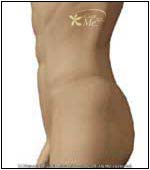|
|
 |

Normal |

Abnormal |
|
|
- Ascites refers to the abnormal
(pathologic) build up of fluid in the peritoneal (abdominal)
cavity. Normally there should be almost no fluid here (i.e.,
surrounding the intestines and organs such as the liver and
spleen).
- Ascites occurs because of one of
four general problems: 1) there is a disease in the
peritoneal cavity that is producing excessive fluid (e.g.,
infections or cancer); 2) there is fluid back up from the
liver or large blood vessels into the peritoneal cavity --
known as portal hypertension; 3) low protein state in the
body; and 4)
miscellaneous.
|
 |
- Increased abdominal
girth
|
 |
-
Disease in
the peritoneal cavity
- Malignant conditions (cancer) -- peritoneal carcinomatosis, hepatocellular carcinoma ("liver cancer"), cancer metastasized to the liver, psuedomyxoma peritonei, and Mesothelioma
- Infections -- bacterial peritonitis, fungal peritonitis, Tuberculosis
peritonitis, HIV-associated peritonitis
- Others -- vasculitis, granulomatous peritonitis,
familial Mediterranean fever, and eosinophilic
peritonitis
- Liver diseases -- cirrhosis, Alcoholic Hepatitis, massive hepatic metastases,
fulminant hepatic (liver) failure, fatty liver of
pregnancy, hepatic fibrosis
- Hepatic (liver) congestion -- congestive Heart Failure, Budd-Chiari syndrome, tricuspid insufficiency, constrictive Pericarditis, and
veno-occlusive disease
- Portal vein occlusion
- Low protein (albumin) conditions
- Severe Malnutrition with anasarca, protein-losing enteropathy (body loses protein from the gastrointestinal tract), and Nephrotic Syndrome (a
kidney condition)
- Pancreatic ascites, ovarian disease, Myxedema (thyroid
disease), chylous ascites, bile ascites, urine ascites,
nephrogenic
ascites |
 |
- Abdominal cavity checked for
peritoneal fluid (check for shifting dullness), liver
examined to see if it is enlarged or tender
- Neck -- check for jugular venous
distention
- Heart -- check for tricuspid
murmur or signs of heart disease
- Lungs -- examine for signs of fluid (Heart Failure)
- Skin -- may show cutaneous spider angiomas (spider vein clusters), palmar erythema (redness to palms of the hands), Dupuytren's Contracture, or large veins on the abdomen.
- Asterixis may be present (a
tremor produced by pushing the hand backwards at a 90
degree angle to the wrist)
- Generalized edema -- swelling
throughout the body
- Examine all lymph nodes carefully for
enlargement
- Ultrasound will
determine if ascites is truly present.
- Paracentesis -- a needle is placed steriley in the abdomen and fluid is drawn off. Small amounts of fluid may be drawn off to help diagnose the cause of the ascites (larger volumes to help relieve pressure). Tests that the fluid may be sent for include cell count, albumin level, total protein, glucose, LDH, Amylase, Bilirubin, triglyceride level, gram stain and culture, AFB (stain and culture for Tuberculosis),
fungal stain and cultures, and cytology (cytology means
the fluid is checked for the presence of cancer cells).
- Albumin level significance -- the
albumin level is very helpful in determining the cause of
the ascites. The albumin level in the peritoneal fluid is
subtracted from the level in the blood. If this number
(known as the serum-ascites albumin gradient) is greater
than 1.1, then the cause is usually in the general
category of portal hypertension (see above); if less than
1.1, it is generally one of the other causes.
- CT scan -- can check for cancer
or blood clots in the hepatic or portal veins.
- Doppler Ultrasound can
detect blood clots in the hepatic or portal veins.
- Laproscopy -- surgery in which only a small incision
is made through which a scope with a camera is passed in
order to directly visualize the abdominal cavity and
possibly biopsy
tissue.
|
 |
- Large volume paracentesis (fluid
removal) may be performed for symptomatic relief. Fluid should be
removed slowly to prevent secondary circulatory hypovolemia.
- Identify and treat the underlying
cause. See individual disease sections for specific
treatments.
- Diuretic induced diuresis.
|
| | |
If you want your friend to read or know about this article, Click here
 |
|
|

